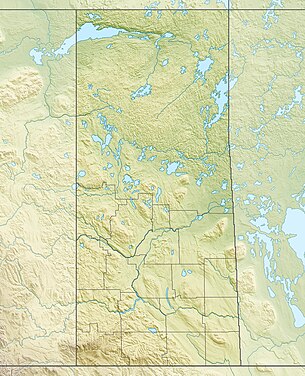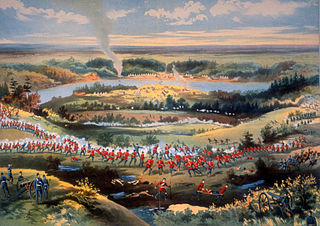
The North-West Rebellion, also known as the North-West Resistance, was an armed resistance movement by the Métis under Louis Riel and an associated uprising by Cree and Assiniboine of the District of Saskatchewan, North-West Territories, against the Canadian government. Many Métis felt that Canada was not protecting their rights, their land, and their survival as a distinct people. Fighting broke out in late March, and the conflict ended in June. About 91 people were killed in the fighting that occurred that spring before the conflict ended with the capture of Batoche in May 1885.

Events from the year 1885 in Canada.

The Battle of Cut Knife, fought on May 2, 1885, occurred when a flying column of mounted police, militia, and Canadian army regular army units attacked a Cree and Assiniboine teepee settlement near Battleford, Saskatchewan. First Nations fighters forced the Canadian forces to retreat, with losses on both sides.
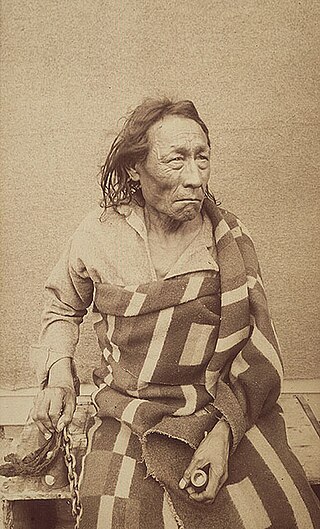
Big Bear, also known as Mistahi-maskwa, was a powerful and popular Cree chief who played many pivotal roles in Canadian history. He was appointed to chief of his band at the age of 40 upon the death of his father, Black Powder, under his father's harmonious and inclusive rule which directly impacted his own leadership. Big Bear is most notable for his involvement in Treaty 6 and the 1885 North-West Rebellion; he was one of the few chief leaders who objected to the signing of the treaty with the Canadian government. He felt that signing the treaty would ultimately have devastating effects on his nation as well as other Indigenous nations. This included losing the free nomadic lifestyle that his nation and others were accustomed to. Big Bear also took part in one of the last major battles between the Cree and the Blackfoot nations. He was one of the leaders to lead his people in the last, largest battle on the Canadian Plains.
The Battle of Frenchman's Butte, fought on May 28, 1885, occurred when a force of Cree, dug in on a hillside near Frenchman's Butte, was unsuccessfully attacked by the Alberta Field Force. It was fought in what was then the District of Saskatchewan of the North-West Territories.

The Battle of Fish Creek, fought April 24, 1885 at Fish Creek, Saskatchewan, was a major Métis victory over the Canadian forces attempting to quell Louis Riel's North-West Rebellion. Although the reversal was not decisive enough to alter the ultimate outcome of the conflict, it was convincing enough to persuade Major General Frederick Middleton to temporarily halt his advance on Batoche, where the Métis would later make their final stand.

The Battle of Batoche was the decisive battle of the North-West Rebellion, which pitted the Canadian authorities against a force of First Nations and Métis people. Fought from May 9 to 12, 1885, at the ad hoc Provisional Government of Saskatchewan capital of Batoche, the greater numbers and superior firepower of General Frederick Middleton's force eventually overwhelmed the Métis fighters.

General Sir Frederick Dobson Middleton was a British general noted for his service throughout the Empire and particularly in the North-West Rebellion in Canada.

The District of Saskatchewan was a regional administrative district of Canada's North-West Territories. It was formed in 1882 was later enlarged then abolished with the creation of the provinces of Saskatchewan and Alberta in 1905. Much of the area was incorporated into the province of Saskatchewan. The western part became part of Alberta, and the eastern part is now part of Manitoba.
Southbranch Settlement was the name ascribed to a series of French Métis settlements on the Canadian prairies in the 19th century, in what is today the province of Saskatchewan. Métis settlers began making homes here in the 1860s and 1870s, many of them fleeing economic and social dislocation from Red River, Manitoba. The settlements became the centre of Métis resistance during the North-West Rebellion when in March 1885, Louis Riel, Gabriel Dumont, Honoré Jackson, and others set up the Provisional Government of Saskatchewan with their headquarters at Batoche.
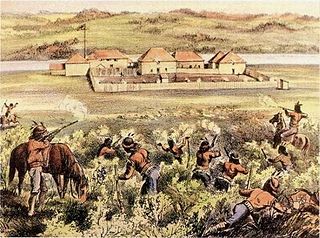
The Battle of Fort Pitt was part of a Cree uprising coinciding with the Métis revolt that started the North-West Rebellion in 1885. Cree warriors began attacking Canadian settlements on April 2. On April 15, they captured Fort Pitt from a detachment of North-West Mounted Police.
The Battle of Loon Lake, also known as the Battle of Steele Narrows, concluded the North-West Rebellion on June 3, 1885, and was the last battle fought on Canadian soil. It was fought in what was then the District of Saskatchewan of the North-West Territories, at what is now known as Steele Narrows at Makwa Lake, in Saskatchewan's Steele Narrows Provincial Park. Steele Narrows is a channel that separates Sanderson Bay from Makwa Lake.

Fort Pitt Provincial Park is a provincial park in the Canadian province of Saskatchewan. Fort Pitt was built in 1829 by the Hudson's Bay Company (HBC) and was a trading post on the North Saskatchewan River in Rupert's Land. It was built at the direction of Chief Factor John Rowand, previously of Fort Edmonton, to trade for bison hides, meat and pemmican. Pemmican, dried buffalo meat, was required as provisions for HBC's northern trading posts.
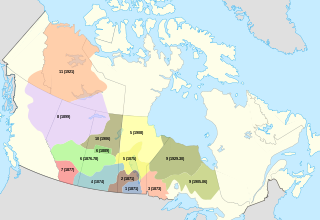
Wandering Spirit was a war chief of a band of Plains Cree. There is little information on Wandering Spirit's life. Most of what is known begins shortly before the 1885 Frog Lake Massacre and ends with the Canadian justice system's convicting him of murder and hanging him. However, there is some information regarding his role within the Plains Cree people.

The Looting of Battleford began at the end of March, 1885, during the North-West Rebellion, in the town of Battleford, Saskatchewan, then a part of the Northwest Territories.
The Iron Confederacy or Iron Confederation was a political and military alliance of Plains Indians of what is now Western Canada and the northern United States. This confederacy included various individual bands that formed political, hunting and military alliances in defense against common enemies. The ethnic groups that made up the Confederacy were the branches of the Cree that moved onto the Great Plains around 1740, the Saulteaux, the Nakoda or Stoney people also called Pwat or Assiniboine, and the Métis and Haudenosaunee. The Confederacy rose to predominance on the northern Plains during the height of the North American fur trade when they operated as middlemen controlling the flow of European goods, particularly guns and ammunition, to other Indigenous nations, and the flow of furs to the Hudson's Bay Company (HBC) and North West Company (NWC) trading posts. Its peoples later also played a major part in the bison (buffalo) hunt, and the pemmican trade. The decline of the fur trade and the collapse of the bison herds sapped the power of the Confederacy after the 1860s, and it could no longer act as a barrier to U.S. and Canadian expansion.

William Bleasdell Cameron was born July 26, 1862, in Trenton, Canada West. He is best known as being one of the survivors of the Frog Lake Massacre, and his book The War Trail of Big Bear that recounts his experiences of the massacre and his captivity.

The Bell of Frog Lake is a church bell that once hung on a timber frame next to the church dedicated to Our Lady of Good Counsel in the settlement of Frog Lake. The settlement was the site of the Frog Lake Massacre, part of the Cree uprising of the North-West Rebellion in western Canada. Led by Wandering Spirit, young Cree warriors attacked the village of Frog Lake in the District of Saskatchewan of the North-West Territories on 2 April 1885, where they killed nine residents.
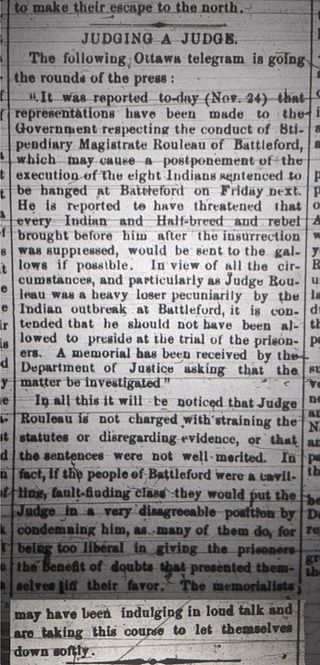
The hangings at Battleford refers to the hanging on November 27, 1885, of eight Indigenous men for murders committed in the North-West Rebellion. The executed men were found guilty of murder in the Frog Lake Massacre and in the Looting of Battleford. These murders took place outside the military combat that took place during the North-West Rebellion.

The Siege of Battleford was a siege during the North-West Rebellion which lasted from 28 March 1885 to 26 May 1885.

